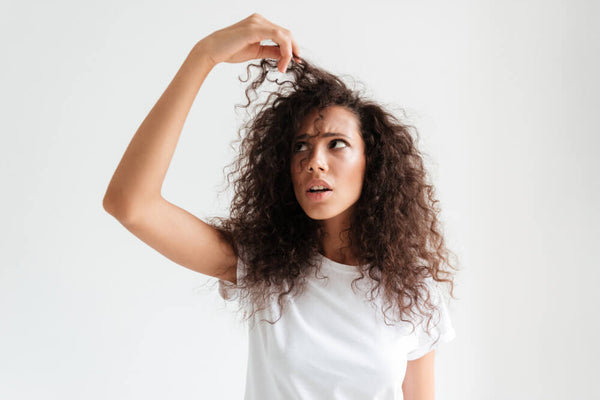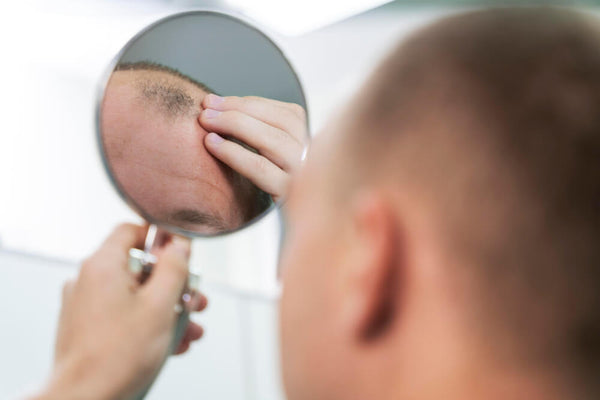Let me tell you about Shanice, a 34-year-old teacher who came to our Atlanta clinic with a grocery bag full of hair products that had failed her. "I've tried everything," she said, her voice heavy with that particular exhaustion that comes from years of disappointment. "Every shampoo, every growth oil, every vitamin—nothing works."
As she spoke, I noticed her strategically styled hair—the careful parting to cover thinning areas, the edges softened with makeup. She'd become an expert at hiding what she called her "hair shame."
If you're like Shanice—tired of throwing money at solutions that don't deliver—let me be straight with you: most hair loss treatments fail because they're treating symptoms, not causes. And for Black women, the causes are often completely different than what those generic treatments are designed to address.
Why Most Hair Loss Treatments Fail Black Women
The Minoxidil Mismatch
That Rogaine you tried? It's designed for genetic hair loss in Caucasian women. But what if your hair loss is actually CCCA, traction alopecia, or driven by fibroids that are draining your iron stores? Minoxidil can't fix that.
The "One-Size-Fits-All" Fantasy
Your friend's miracle treatment won't necessarily work for you because her root causes are different. Is your hair loss from:
-
Hormonal imbalances (PCOS, perimenopause)?
-
Nutritional deficiencies (low iron, Vitamin D)?
-
Inflammatory conditions (CCCA, folliculitis)?
-
Physical damage (traction alopecia from styling)?
Until we know, we're just guessing.
The Cultural Blind Spot
Most treatments weren't created with Black hair in mind. They don't understand our unique follicle structure, our styling practices, or conditions like CCCA that primarily affect women of color.
Our Approach: Treating Your Hair Loss Like the Medical Detective Work It Is
At Nina Ross Hair Therapy, we don't just look at your hair—we investigate your entire health picture.
We Start with Advanced Diagnostics
While most places glance at your scalp, we use trichoscopy to see your follicles at 200x magnification. This lets us spot the early signs of scarring alopecia (CCCA) that naked eyes miss—before the damage becomes permanent.
We Run the RIGHT Labs
Your annual physical probably didn't check:
-
Ferritin (your hair's iron savings account)
-
Full thyroid panels (not just TSH)
-
Hormone mapping (estrogen, progesterone, testosterone balance)
-
Inflammation markers (that attack your follicles)
We Connect the Dots Others Miss
That widening part might be telling us about:
-
The fibroids causing heavy periods and iron deficiency
-
The gut issues preventing nutrient absorption
-
The chronic stress spiking your cortisol
-
The early CCCA that needs immediate intervention
Treatments That Actually Work for Black Women
Once we understand your unique root causes, we have tools most clinics don't offer:
For Scarring Alopecia (CCCA):
PRP can struggle with scar tissue but here exosomes can actually help remodel that damaged tissue to revive follicles.
For Hormonal Hair Loss:
We go beyond basic medications when everything fails. Then we’ll use bioidentical hormone balancing and targeted DHT blockers as these treatments don’t have many side effects.
For Stubborn Cases:
PRP can fetch limited results at times. But exosomes mostly work because they contain 300+ growth factors as compared to PRP's handful.
For Nutritional Deficiencies:
We don't just tell you to "eat better." We create a personal supplement plan that’ll be based on your actual lab results.
The 3 Signs You Need More Than Quick Fixes
Come see us immediately if:
-
Your thinning follows a pattern (widening part, receding edges)
-
You've tried multiple treatments with minimal results
-
You're also experiencing fatigue, heavy periods, or other health issues
Why Waiting is the Most Expensive Option
I've seen too many women wait until their hair loss is severe, when we could have saved so much more hair with early intervention. Conditions like CCCA create permanent scarring—the earlier we treat, the more hair we preserve.
Your Hair Doesn't Have to Be a Lost Cause
Shanice's story didn't end with that grocery bag of failed products. Once we discovered her hair loss was driven by severe iron deficiency (from undiagnosed fibroids) and early CCCA, we created a targeted plan. Six months later, she sent me a photo with the caption: "My edges are coming back!"
Ready for a Different Kind of Hair Loss Solution?
If you're tired of generic advice and ready for a approach that actually addresses your unique causes, book your Hair Therapy Evaluation with us today for just $99 and let's give your scalp the peace it needs.














